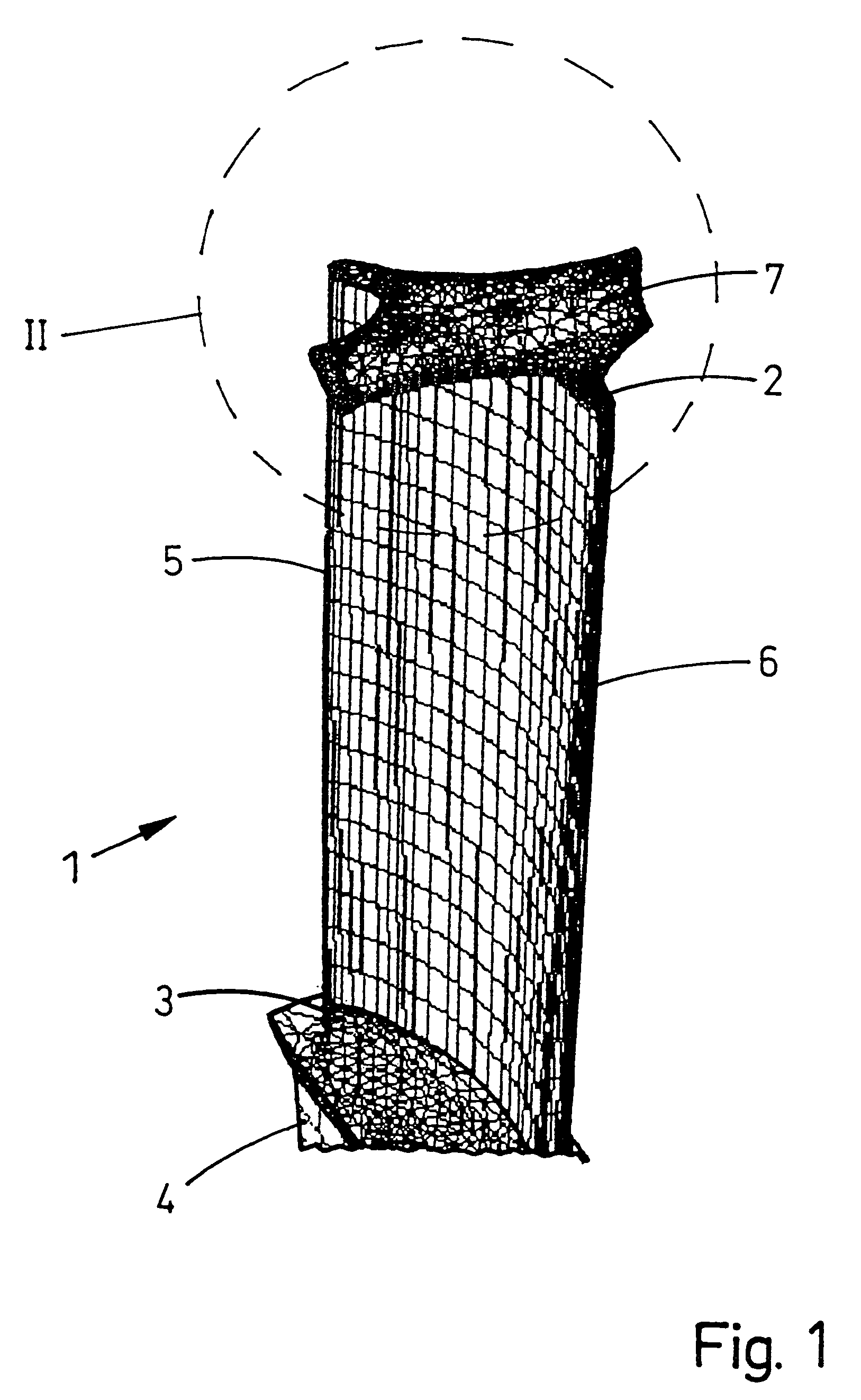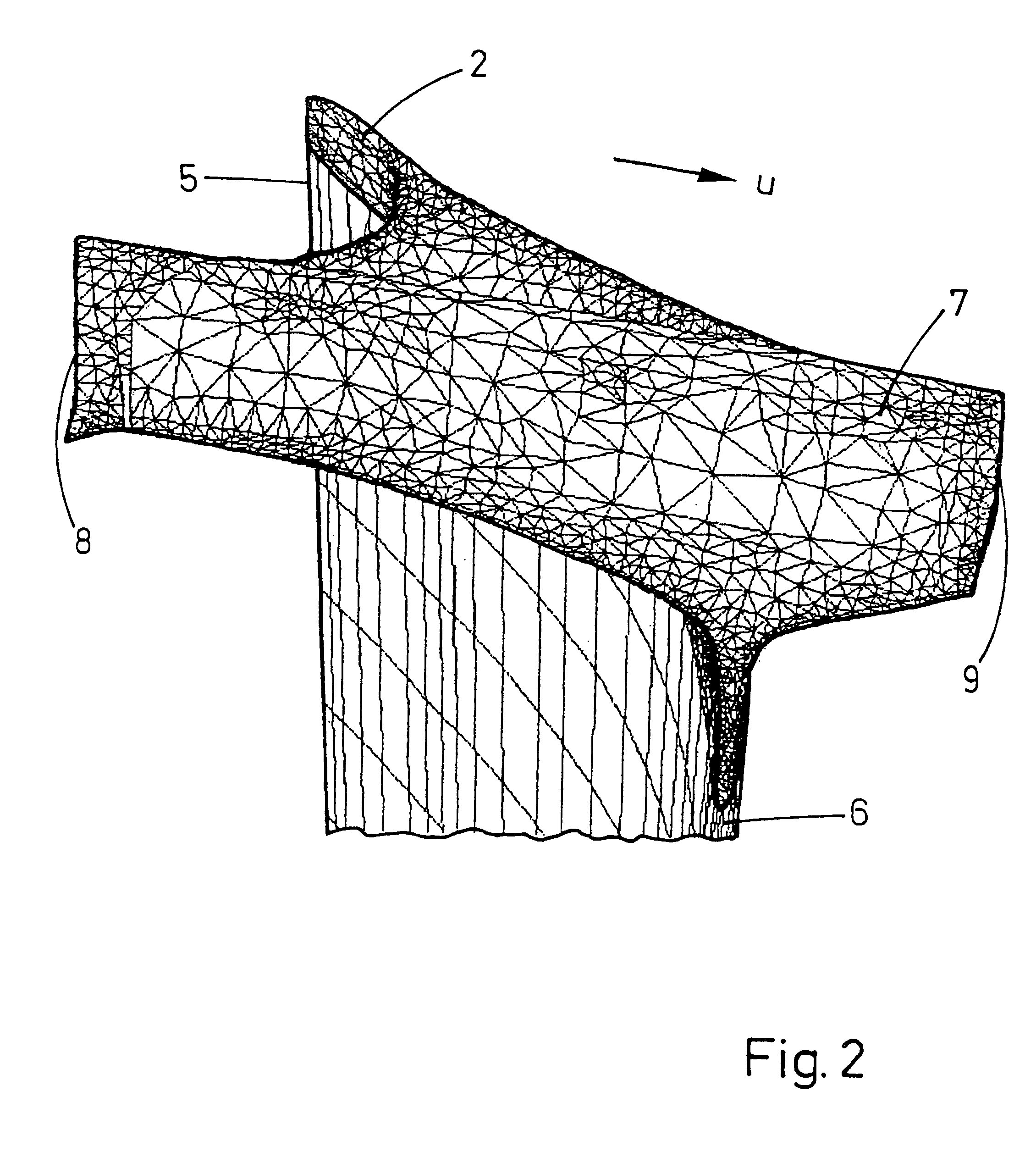Method of modifying the coupling geometry in shroud band segments of turbine moving blades
a technology of shroud band segments and turbines, which is applied in the direction of machines/engines, manufacturing tools, other domestic articles, etc., can solve the problems of reducing the efficiency of the plant and unsatisfactory high wear on the existing turbine stage, and achieves the effect of prolonging the life of the shroud band segment, improving the wear behavior of the coupling region, and reducing the cost of production
- Summary
- Abstract
- Description
- Claims
- Application Information
AI Technical Summary
Benefits of technology
Problems solved by technology
Method used
Image
Examples
Embodiment Construction
[0022]FIG. 1 shows a perspective view of a lattice model of a turbine moving blade 1 having a shroud band segment 7. The turbine moving blade 1 has a blade tip 2 at its top end and a blade root 3 at its bottom end, the blade root 3 continuing in a shank 4 (shown only approximately). The airfoil leading edge 5 is shown on the left-hand side of the drawing and the airfoil trailing edge 6 is shown on the right-hand side of the drawing.
[0023]As can be seen in particular in FIG. 2 of the illustration of the detail II from FIG. 1, the shroud band segment 7 on the blade tip 2 runs essentially transversely to the airfoil chord running between the airfoil leading edge 5 and the airfoil trailing edge 6 and parallel to the circumferential direction U. In this case, the shroud band segment 7 does not extend over the entire blade depth but only to a region in the blade center. The transition between the shroud band segment 7 and the blade tip 2 is determined by transition radii. Furthermore, con...
PUM
| Property | Measurement | Unit |
|---|---|---|
| coupling angle | aaaaa | aaaaa |
| coupling angle | aaaaa | aaaaa |
| coupling angle | aaaaa | aaaaa |
Abstract
Description
Claims
Application Information
 Login to View More
Login to View More - R&D
- Intellectual Property
- Life Sciences
- Materials
- Tech Scout
- Unparalleled Data Quality
- Higher Quality Content
- 60% Fewer Hallucinations
Browse by: Latest US Patents, China's latest patents, Technical Efficacy Thesaurus, Application Domain, Technology Topic, Popular Technical Reports.
© 2025 PatSnap. All rights reserved.Legal|Privacy policy|Modern Slavery Act Transparency Statement|Sitemap|About US| Contact US: help@patsnap.com



